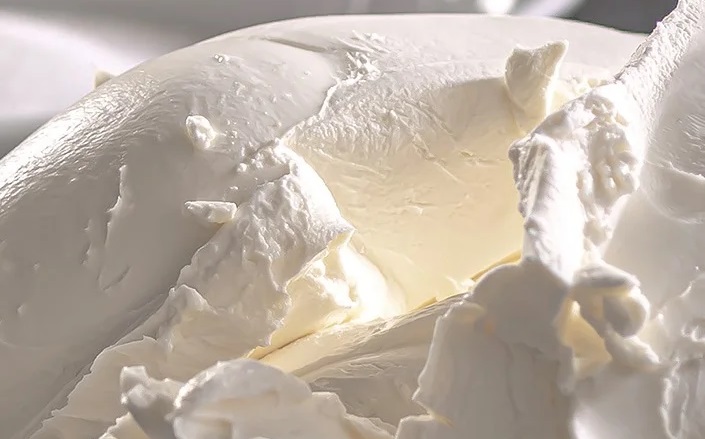Der Inhalt dieser Seite wurde durch eine automatisch ûbersetzung ins Deutsche û¥bersetzt. Die Originalversion ist auf Englisch. Vielen Dank fû¥r Ihr VerstûÊndnis.
KûÊse ist eine der ûÊltesten Delikatessen aus Milch. In vielen Sprachen ist der Ursprung des Wortes mit Begriffen fû¥r Milch oder Milchprotein, Kasein, verbunden.
Zur KûÊseherstellung wird nicht nur Kuhmilch verwendet, sondern auch Ziegen, Schafs, Bû¥ffel, Kamel, Hirsch, Elch und sogar Eselsmilch.
Je nach Milchsorte werden unterschiedliche KûÊsesorten hergestellt, von denen einige in bestimmten LûÊndern traditionelle und patentierte Produkte sind, die an bestimmte Regionen oder geografische Gebiete gebunden sind.
Beispielsweise ist Gouda-KûÊse nach der gleichnamigen Stadt in den Niederlanden benannt. Brynza (SalzkûÊse) ist eine ostslawische Delikatesse, die hûÊufig in der Slowakei, der Tschechischen Republik und Ungarn zu finden ist. Feta-KûÊse hat balkanisch-griechische Ursprû¥nge.
KûÊsesorten werden normalerweise nach HûÊrte oder Fettgehalt klassifiziert.
Normalerweise werden folgende Kategorien unterschieden:
- HartkûÊse (Parmesan, Grana Padano, Pecorino, Djugas usw.)
- HalbhartkûÊse (Cheddar, Emmentaler, Maasdamer, Gouda, Tilsiter usw.)
- WeichkûÊse (Brie, Camembert, Roquefort, Dorblu usw.)
- In Salzlake eingelegt (Ricotta, Mascarpone, Mozzarella, Feta, Brynza usw.)
In letzter Zeit taucht jedoch zunehmend eine ãfû¥nfteã KûÊsesorte in den Regalen der GeschûÊfte auf ã FrischkûÊse. Aber was fû¥r eine KûÊsesorte ist das?
FrischkûÊse bezieht sich eher auf die Konsistenz des Produkts als auf die Art der Rohstoffe oder die verwendete Produktionstechnologie. Eine spezielle Kategorie von in Salzlake eingelegten KûÊsesorten kann sogar eine cremige Textur erzielen, obwohl der daraus resultierende FrischkûÊse nicht in die Kategorie ãWeichkûÊseã fûÊllt, da die Produktionsmethode und der Reifungsprozess gleich bleiben.
Es gibt zwei MûÑglichkeiten, um bei KûÊse, der nicht weich ist, eine cremige Textur zu erhalten. Bei einer Methode wird der KûÊse durch Schmelzen thermisch verarbeitet, bei der anderen wird durch mechanische Einwirkung eine homogene, zarte Textur erzeugt.
Der Schmelzprozess verûÊndert die Struktur von HartkûÊse durch Erhitzen des KûÊses auf eine Temperatur von 75ã90 Grad Celsius in eine pastûÑse Masse.
Die mechanische Verarbeitung von in Salzlake eingelegtem KûÊse, wie z. B. Brynza, ermûÑglicht die Herstellung einer cremigen Form mit ansprechender, streichfûÊhiger Textur. Dies ermûÑglicht eine erweiterte Verwendung von Brynza als leicht streichfûÊhiges KûÊseprodukt.
Es gibt auch verschiedene KûÊseprodukte, die durch mechanische Verarbeitung von KûÊse mit Zusatzstoffen hergestellt werden und die aufgrund ihrer Textur oder Form als FrischkûÊse klassifiziert werden kûÑnnen. Zur Herstellung solcher Produkte werden Mischer mit eingebauten Homogenisatoren verwendet. Diese GerûÊte werden auch zur Herstellung plastischer, homogener Brotaufstriche aus Butter, Quark und Sahnepasten auf der Basis von WeichkûÊse sowie zur Homogenisierung von Butter eingesetzt.

















